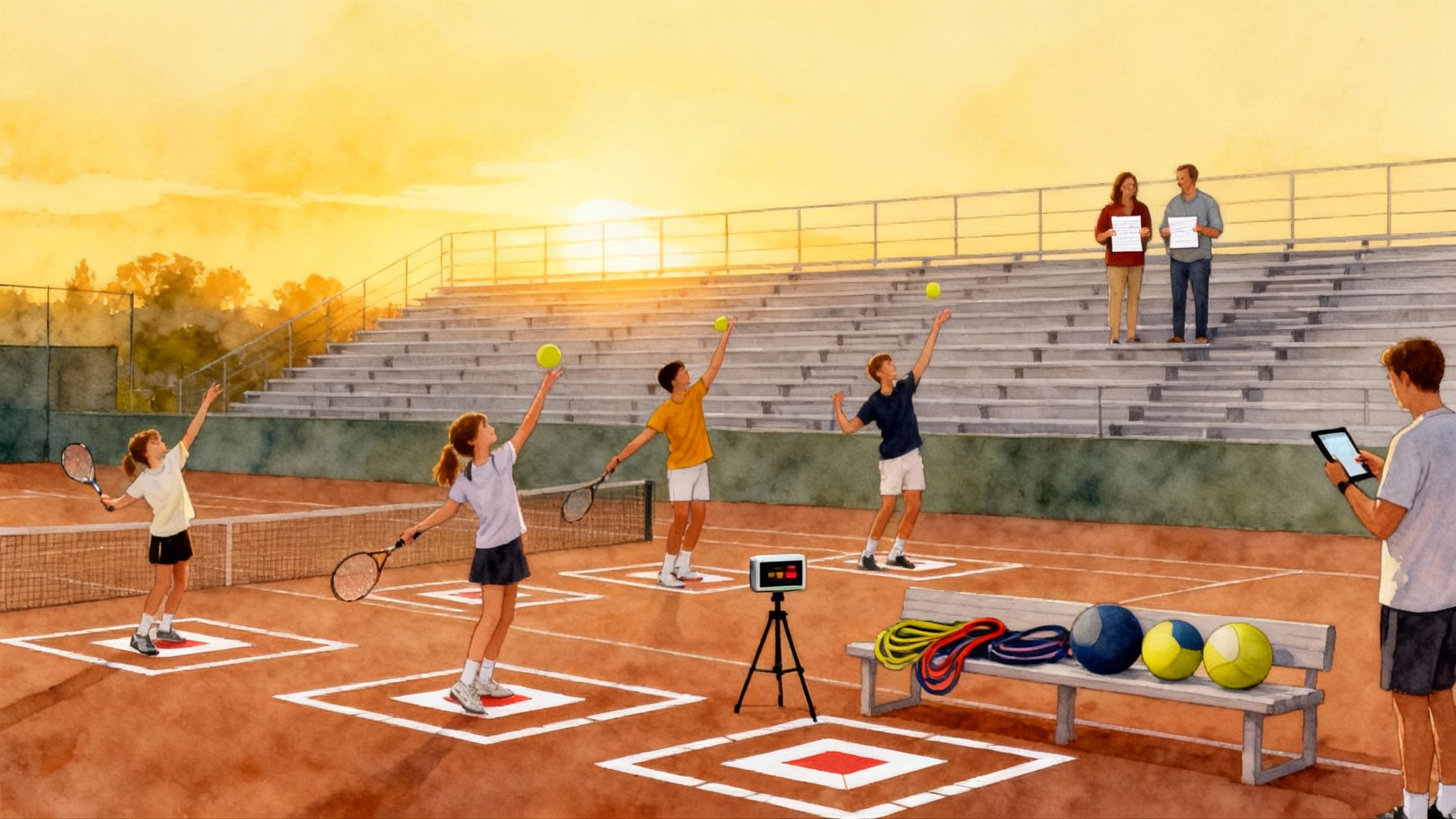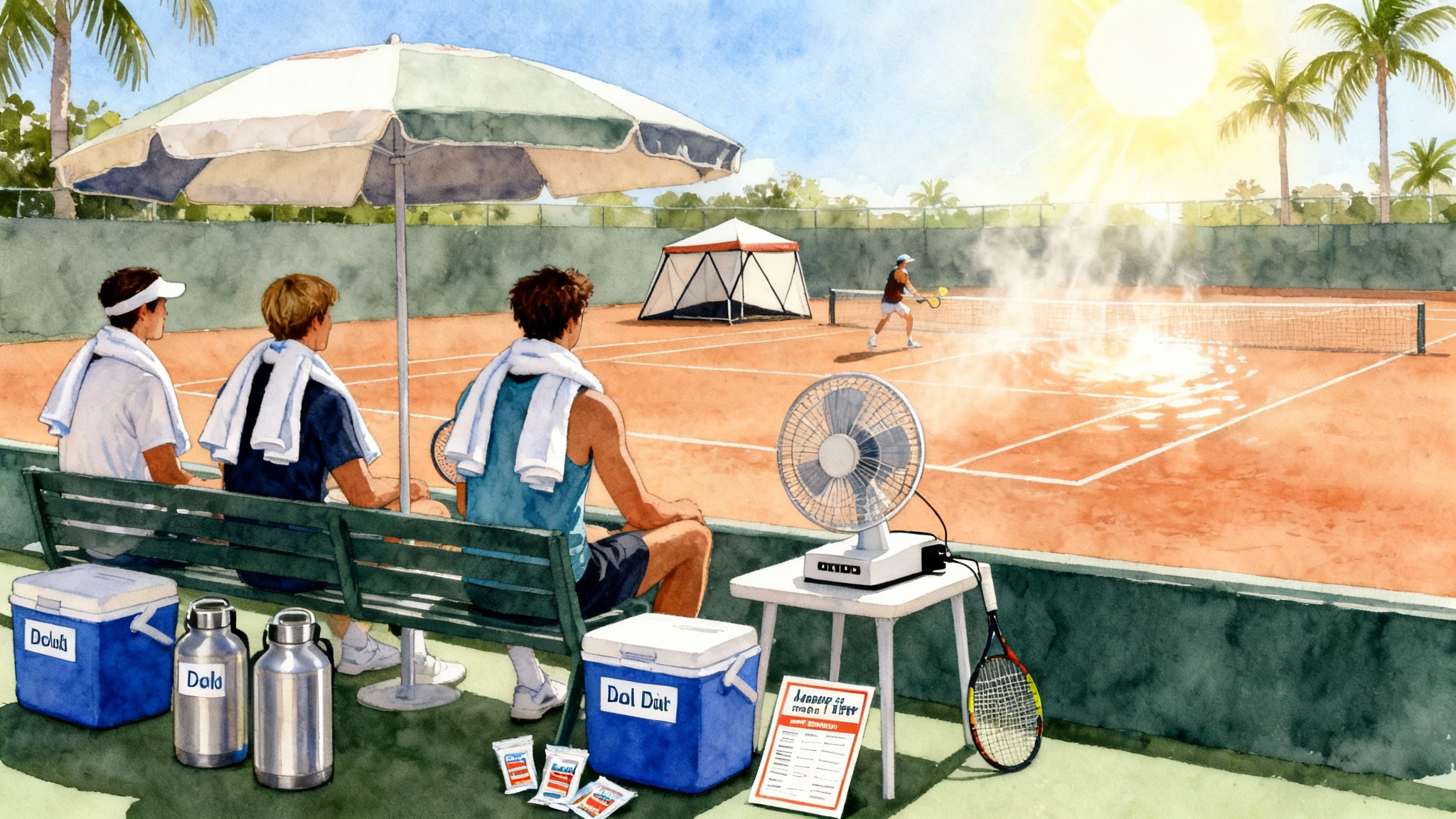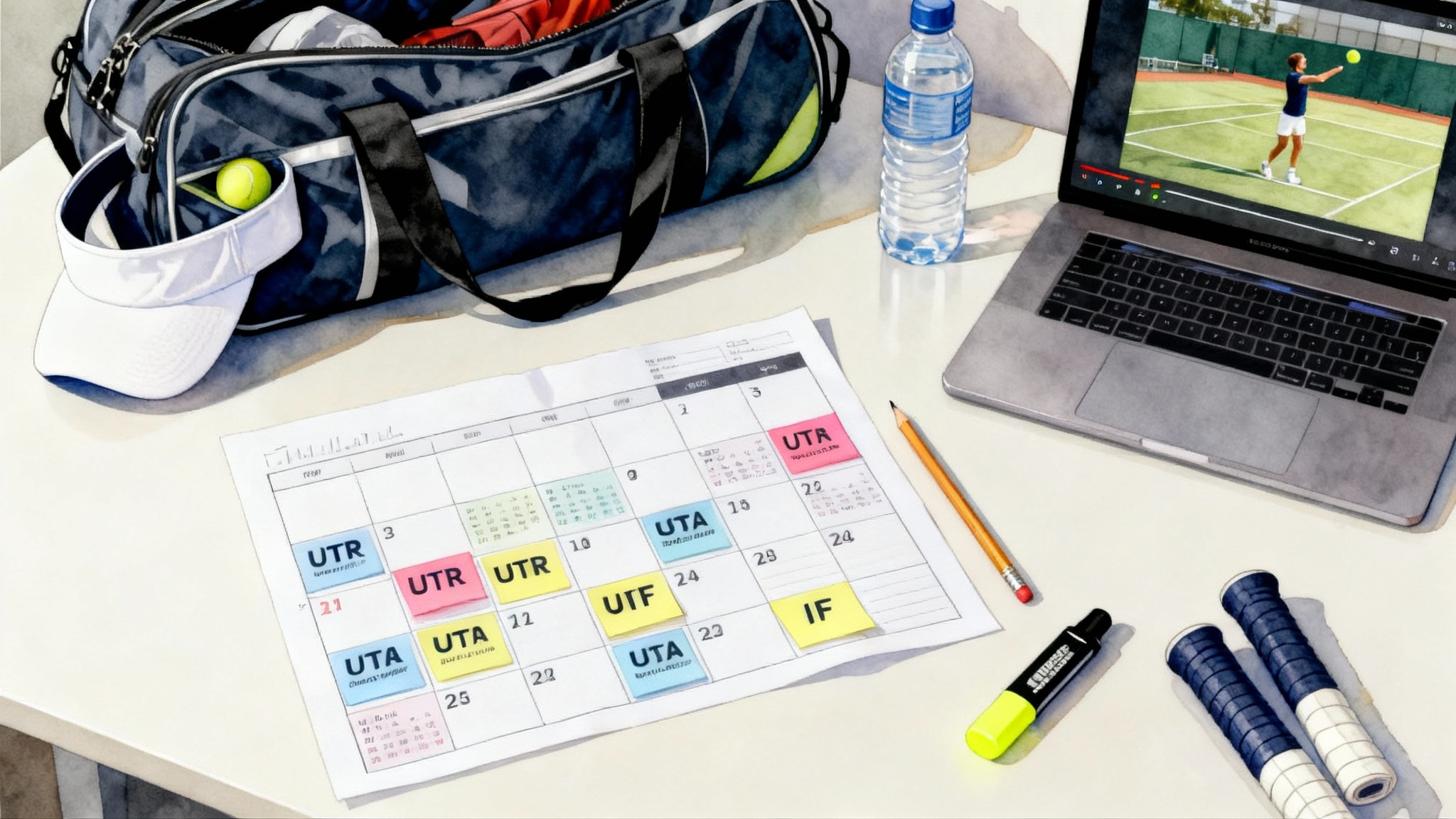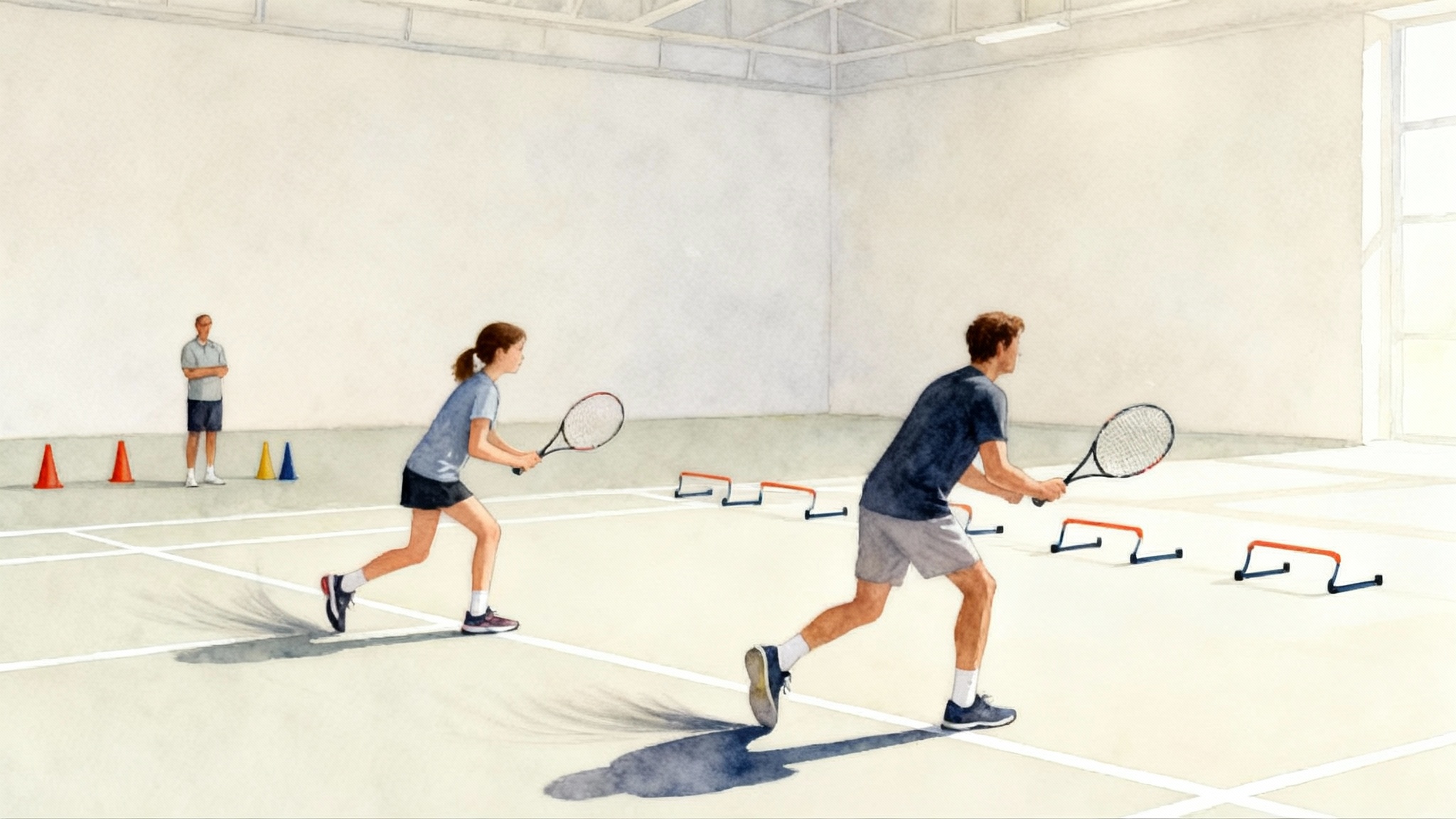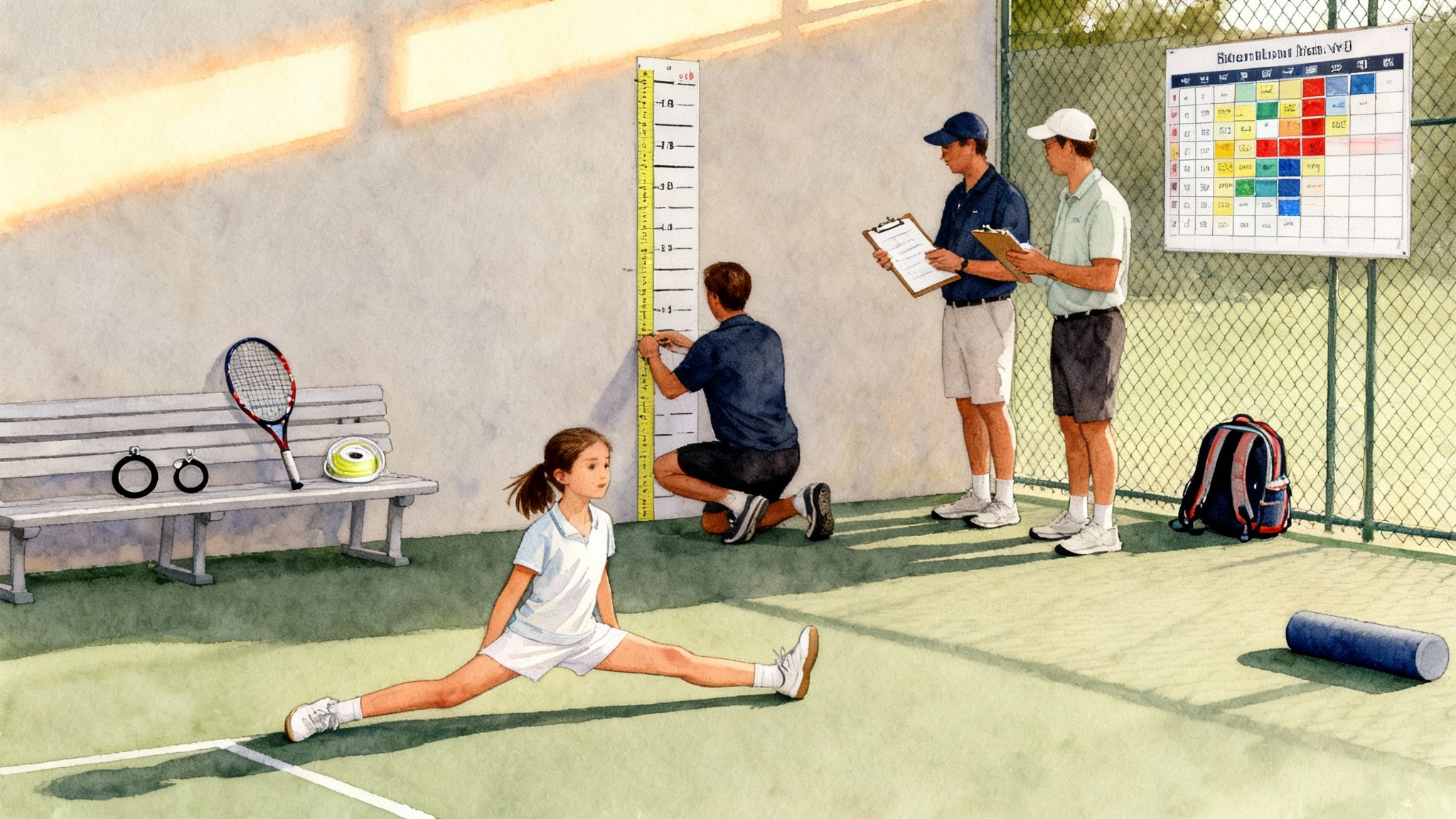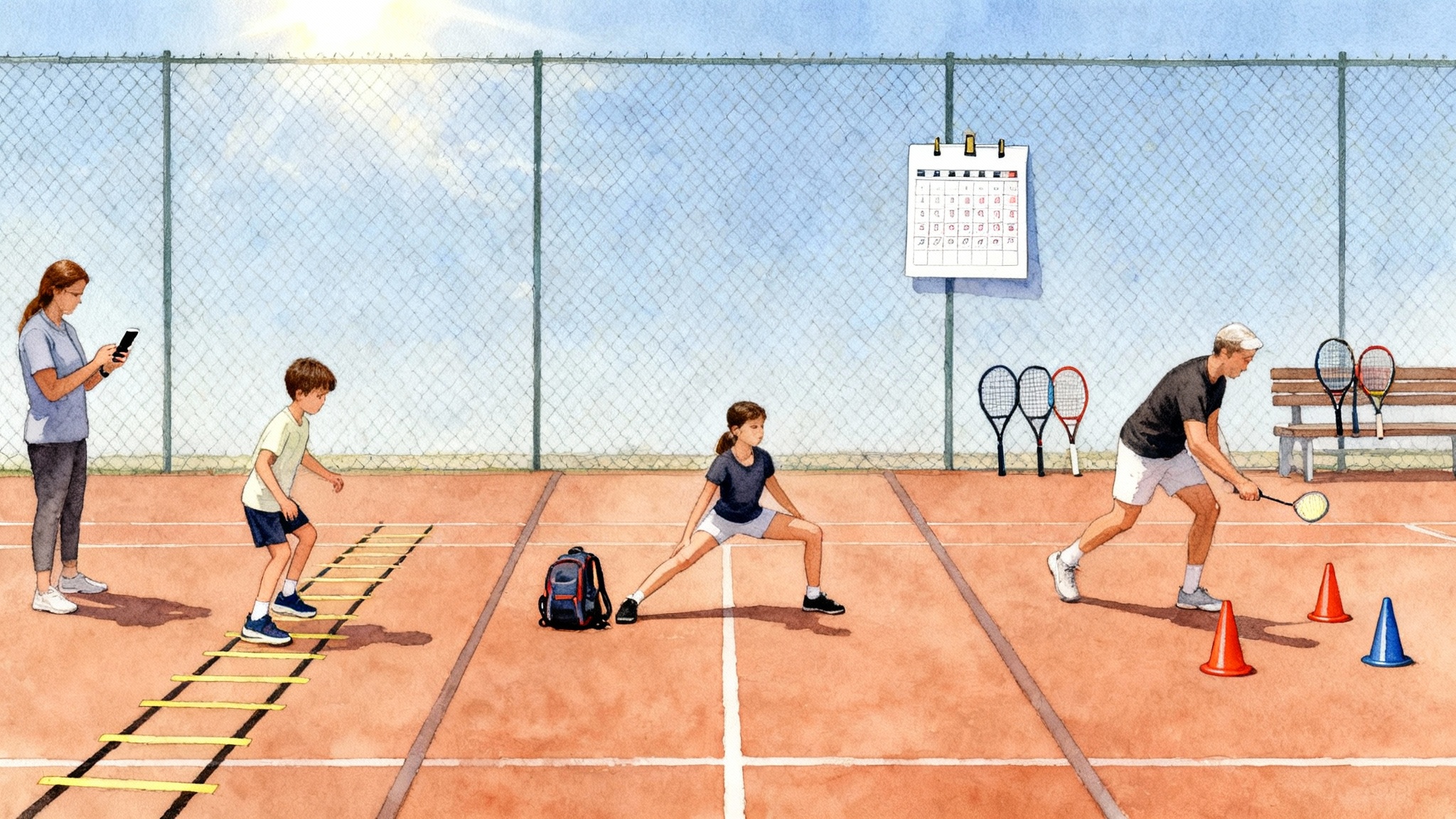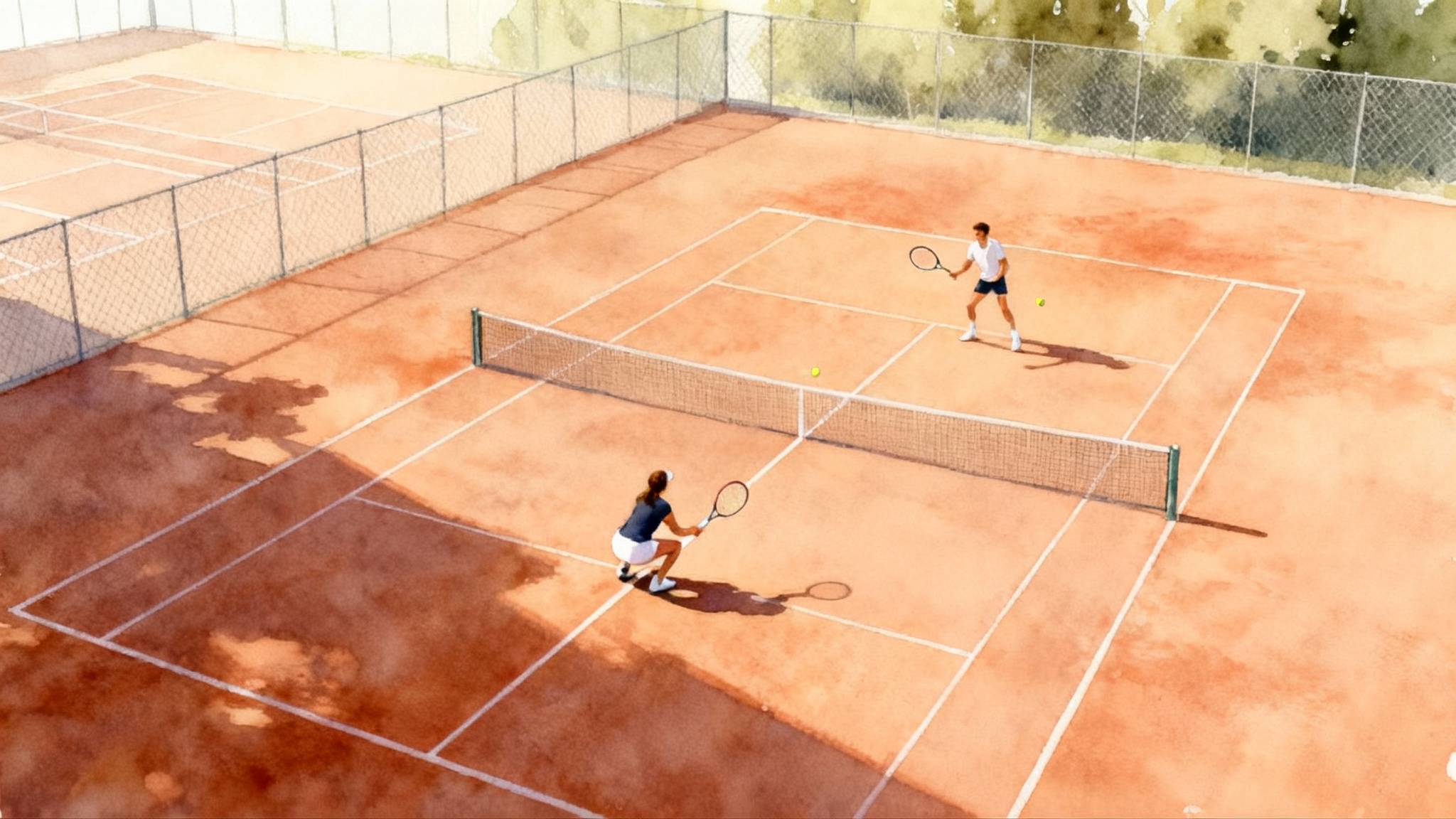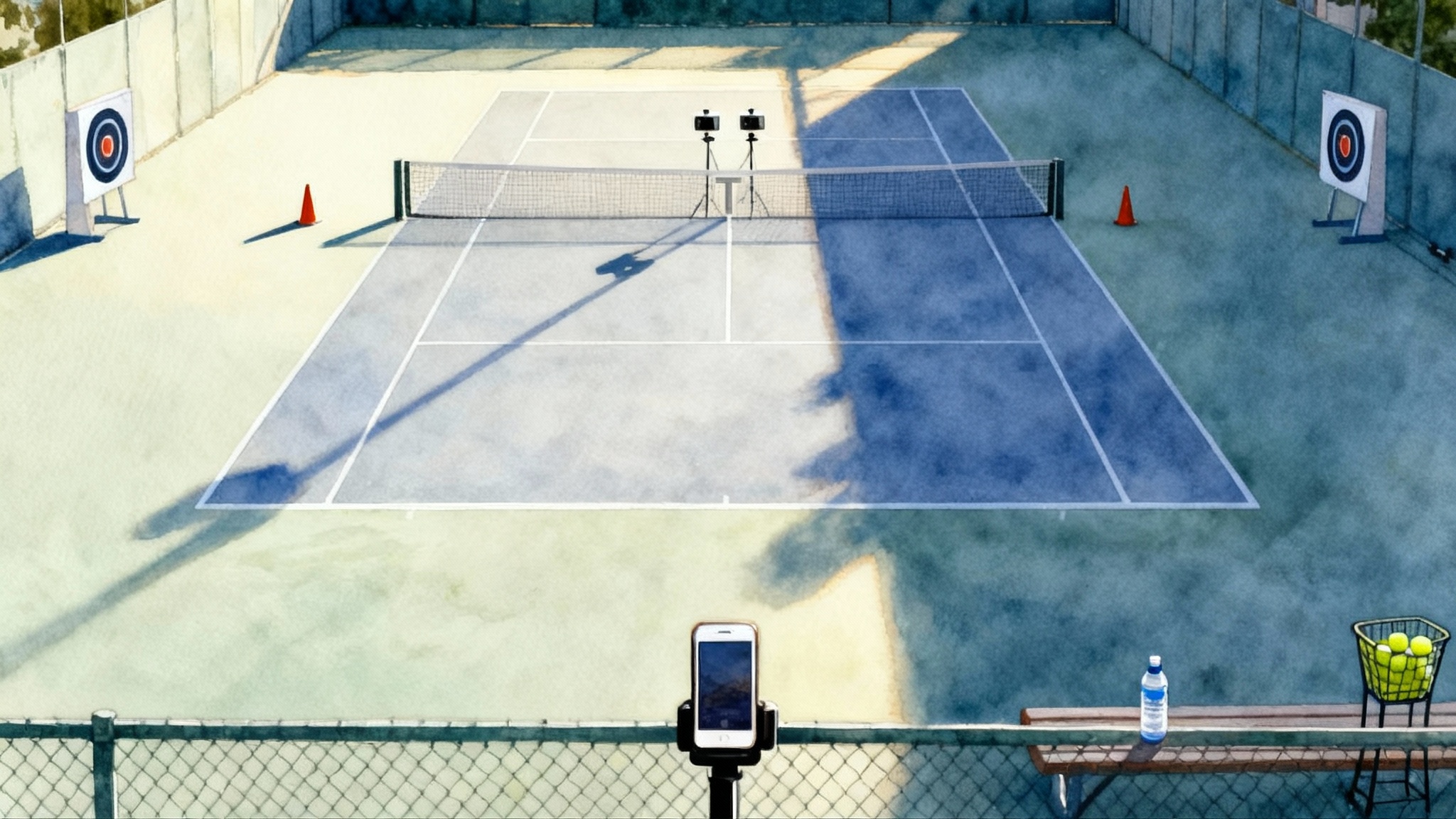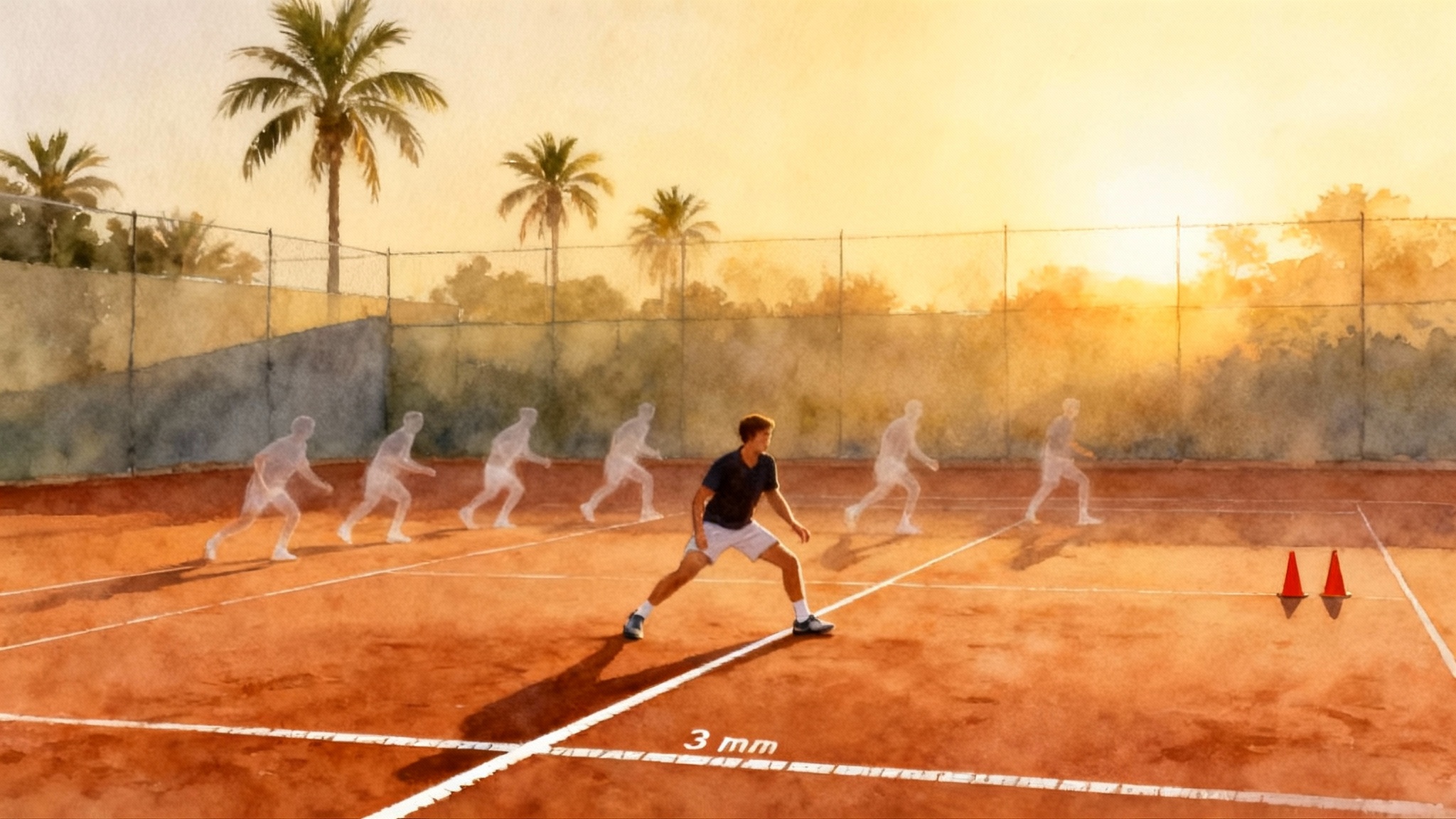Return of Serve Mastery 2025: Read, React, Neutralize Pace
A level-based guide to build a world-class return of serve in 2025. Learn pre-serve reads, split-step timing, contact-point windows, and simple target maps by UTR and NTRP, plus micro-doses, parent-fed drills, and small-sided clinic games.
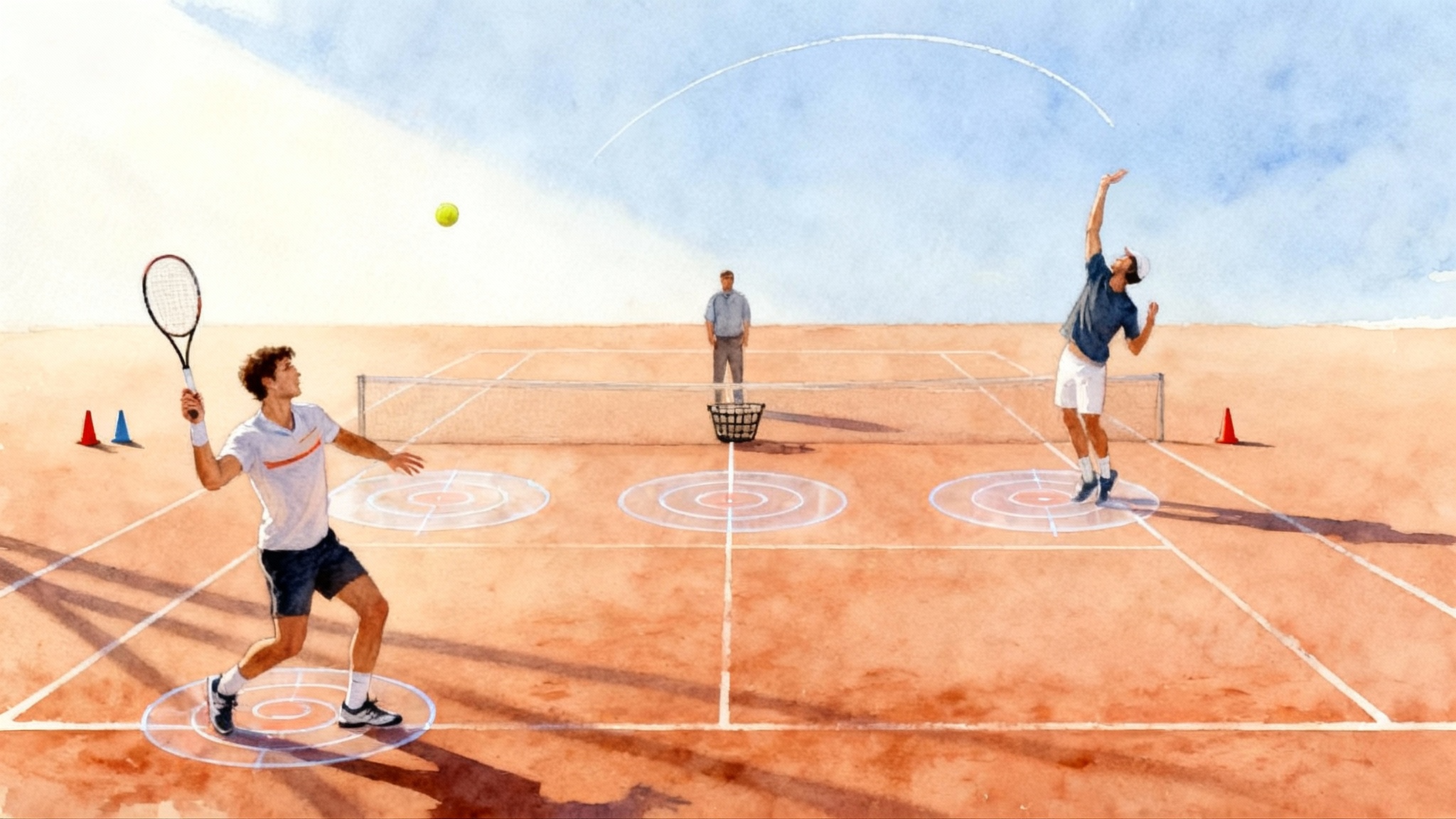
Why the return decides matches in 2025
In modern tennis, the server starts the point with the advantage, but the returner decides how the rally will feel. A world-class returner does three things well. They read cues before the toss. They time the split so the first step is immediate. They neutralize pace into a target that squeezes the server’s next ball. This article turns those ideas into drills you can run in fifteen minutes before a match, small-sided games for adult clinics, parent-fed drills for juniors, and a sample 4:1 session modeled on programs like the Gomez Tennis Academy training model.
We will reference levels with the National Tennis Rating Program and Universal Tennis Rating so you can scale targets and drills. If you are new to these, skim the USTA NTRP overview and the Universal Tennis Rating guide for definitions. We will keep everything practical, specific, and repeatable on any court.
The read–react–neutralize framework
You need a compact plan you can run under pressure. Think of the return as three short steps.
- Read: collect one or two cues before and during the toss. Pick the most reliable cue for that opponent.
- React: split on time, then take your first step in the direction of the bounce before the ball crosses the net.
- Neutralize: choose the right contact height and simple target that makes the server hit up or run.
Master each step separately, then link them with scoring and time pressure.
Pre-serve reads that actually matter
You do not need to read everything. Pick the cue that moves your feet first.
- Toss location relative to tossing shoulder
- Inside the hitting shoulder and forward often signals slice to the returner’s forehand on the deuce side and to the backhand on the ad side.
- Over the head with a higher peak often signals kick. Expect higher contact and bounce to your outside shoulder.
- Way out in front signals flat pace. Expect a lower bounce that stays straight.
- Rhythm of the ritual
- Two quick bounces then a pause often precedes a heavier serve. Count the rhythm so your split matches their contact.
- Stance and shoulder line
- Closed shoulder line often produces slice or kick. Square and aggressive often produces flat.
- Trunk tilt and knee flex
- More knee flex with an arched back correlates with kick. Minimal flex with a higher toss often correlates with flat.
Build a server profile in two games. Note the default serve on 30-30 and break points. Many players fall back to a favorite pattern under pressure.
A 60 second read routine before every match
- First two service games of the opponent
- Watch from the fence. Track toss height, where the toss peaks relative to the head, and whether the racket face finishes around the body or up and over.
- Write one sentence in your head
- Example: “Deuce side slice wide, ad side kick body. Flat only on first ball at 40-0.”
- Set your base position accordingly
- Against kick, move in one shoe length to take the ball earlier. Against slice wide, shift one shoe toward the alley on the deuce side.
Split-step timing and first-step rules
Your split is not a jump. It is a small hop that stores elastic energy so you can push into the first step. The key is when your feet land.
- Rule of thumb for flat servers
- Land your split as the ball leaves the strings. If you land after contact, you are late. If you land before contact, you will sink too early and get stuck.
- Rule of thumb for heavy kick servers
- Delay the split a fraction. Land as the ball crosses the net tape so you can adjust to the higher bounce.
- Three useful variations
- Classic split: neutral stance, feet under shoulders. Best against straight pace.
- Flow split: take a small glide step into the split toward your stronger wing. Good when you expect slice wide.
- Delay split: tiny pause at the top of the hop when the server tosses high. Use sparingly to avoid getting flat footed.
Footwork pairing by serve type
- Flat: outside foot drop step, then crossover. Keep the backswing short and inside the body line.
- Slice: jab step with the outside foot toward the alley, then a lateral shuffle to hold spacing.
- Kick: first step diagonally forward toward the ball’s bounce, not sideways. Catch the ball on the rise.
For a deeper movement primer, see split-step and shuffle patterns.
Contact-point windows that make returns simpler
Think in windows, not perfect spots. A window is a range of height and distance where your swing path stays compact and your strings face the court.
- Against flat pace
- Height: waist to hip high. Distance: slightly in front of the lead hip. Use a short punch with minimal lag.
- Against slice wide
- Height: knee to hip. Distance: slightly outside the outside knee so you do not reach across your body. Use a blocked chip or firm roll.
- Against kick up and away
- Height: chest to shoulder. Distance: in line with the front shoulder. Use a short catch-and-roll with the elbow in front of the ribs.
If the serve jams the body, shift the contact window by opening the front hip early and letting the ball pass to the back hip for a compact backhand block.
Simple target maps by level
You do not need fancy targets. You need targets that force the server to hit up, move, or both. Use these maps by NTRP and UTR level.
- NTRP 2.5 to 3.0 or UTR 2 to 4
- Primary target: deep middle, one racket inside the singles line and two rackets inside the baseline. This reduces angle and buys time.
- Second target: body of the server. Aim at the logo. This jams the first volley.
- Avoid: low percentage sideline lasers.
- NTRP 3.5 or UTR 4 to 6
- Primary target: cross middle third to the server’s backhand. Choose the side that typically sees weaker half volleys.
- Second target: deep up the line only on second serves when you read toss out wide to kick.
- Add: chip short cross on second serves to pull the server wide, then take the open court.
- NTRP 4.0 to 4.5 or UTR 6 to 8
- Primary target: into the depth pocket at the server’s feet. Neutralize with a firm low ball that lands inside the service line then skids.
- Second target: high heavy cross to the baseline corner that stretches the server.
- Pattern: on ad side, backhand block down the line when toss drifts over the head, then look middle.
- NTRP 5.0 plus or UTR 8 plus
- Primary target: first-strike depth to the backhand corner, bouncing near the baseline to push the contact up.
- Second target: aggressive middle to take time from serve volleyers.
- Changeup: chipped lob over a closing server one in ten returns to reset court position.
Use one target per game. Switch only if the server adapts. To understand how servers build patterns you can exploit, pair this with the Age-Smart Serve Blueprint 2025.
Fifteen minute warm up micro-doses
You can prime your vision, feet, and strings in fifteen minutes. No excuses.
Minute 0 to 3: eye warm
- Partner stands at the service line and hand tosses mini serves to your forehand and backhand. You catch with your strings and freeze the strings to show aim. Focus on watching the blur of the ball all the way to the strings.
Minute 3 to 7: split timing
- Partner does shadow toss and fake serves. You split on their contact and take one explosive first step toward the bounce. No hit, just footwork. Five reps deuce side, five reps ad side.
Minute 7 to 11: compact swing
- Short court returns from the service line. Partner serves at half speed from the opposite service line. You block or roll to deep middle targets. Two sets of eight balls per side, no misses allowed.
Minute 11 to 15: target calibration
- Full court second serve pace only. Pick one target for four balls, then switch. Keep a score out of eight. Goal is six of eight with depth.
If you are alone, replace partner feeds with wall work. Toss the ball into the service box to simulate a serve bounce, split on the toss, then block to a chalk mark on the wall.
Parent-fed drills for juniors
Parents can help without guessing mechanics. Keep it simple and safe.
Setup
- Use a red, orange, or green ball based on age and experience. Parents stand on the service line across the net. Juniors return from a position that matches their ball color court.
Drill 1: toss mirror and read
- Parent raises the non hitting arm like a real toss. If the arm moves forward and right, the parent feeds a gentle slice to the junior’s forehand. If the arm goes up and back, the parent feeds a kick style loop to the backhand. Junior calls the serve type out loud before moving. Ten balls, then switch sides.
Drill 2: split bell
- Parent says “set” when the tossing arm lifts, “hit” when the racket would contact. Junior must land the split on “hit.” Add a soft feed right after “hit” to train first step. Score one point for every on time split.
Drill 3: traffic cone targets
- Place two small cones in deep middle and at the server’s feet. Parent feeds simple second serves. Junior aims to knock over cones. Three sets of eight balls, best of three wins.
Safety rules
- Parents never serve full speed to small kids.
- Parents keep the feed soft and visible. No deception games for red ball age.
Small-sided games for adult clinics
Small courts and clear scoring keep the focus on the return.
Game 1: two on two survivor return
- Two returners vs two servers. First ball must land in the designated target zone, deep middle for round one. If the returner makes it, play the point out. If the server team wins two points in a row, the returner pair swaps sides. First to 15 wins.
Game 2: serve jailbreak
- Singles half court. Server must start behind the baseline. Returner can only hit into a marked lane at the server’s feet. If the returner hits that lane, they earn two points. All other winners are worth one. Play to 11, win by two.
Game 3: short-court returns
- Both players inside the service boxes. Serve is a hand toss that must bounce in the box. Returner aims short angle to pull the server wide, then plays out to 10. Focus on quick split and compact swing.
Sample 4:1 group session modeled on Gomez Tennis Academy
This 90 minute plan mirrors how high performance academies structure return work. One coach, four players, one side of the court, strict standards.
Block 1: read and split, 20 minutes
- Setup: coach on baseline with a basket. Players rotate as returners on deuce and ad sides. Coach does shadow tosses and fakes to establish rhythm.
- Drill A: split on contact. Ten reps per player per side, no hitting. Coach calls out early or late. Players who go 10 for 10 earn one bonus point for the session.
- Drill B: cue lock. Coach mixes three toss patterns that correlate to slice wide, flat body, and kick out. Players call the serve in the air, then block into deep middle. Score two points for correct read, one for made return.
Block 2: contact windows and footwork, 25 minutes
- Setup: coach serves at 60 percent pace with clear types. Players must execute the right first step and hit into assigned windows.
- Drill C: flat to waist. Players keep elbows in front of the ribs, no full backswings. Five balls per player to each wing. Miss long is fine, miss wide is not.
- Drill D: kick on the rise. Players start one step inside the baseline. First step is diagonally forward to meet the ball at chest height. Five reps per side. Coach freezes players at contact to check height and distance.
Block 3: target maps by level, 25 minutes
- Setup: players grouped by UTR or NTRP bands. Each band has a primary target for the next ten minutes.
- Drill E: band targets
- Lower band: deep middle only. Ten in a row before switching sides.
- Middle band: cross middle third to backhand. Seven of ten needed to move on.
- Higher band: feet of the server with underspin or firm roll. Six of ten with depth to graduate.
- Constraint: if a player misses two in a row, they step back to the previous target for three balls.
Block 4: score under stress, 15 minutes
- Live serve and return, server must announce serve type before toss on first four points, then goes live on the next four. Returner’s goal is to win first ball neutral 75 percent of the time. Use a simple race to 8 with a must win by two rule. Coach tracks first ball quality, not just points.
Session standard
- Every return lands higher than the net tape by two racket heads, and the average miss is long rather than in the net. Finish with two minutes of reflection where each player states their default return target for the next match.
Equipment and setup that help without changing your stroke
- Strings and tension
- If your returns float, consider one to two pounds tighter tension to lower launch angle. If you struggle to clear the net on blocks, drop a pound.
- Grip readiness
- Hold a continental or a mild eastern backhand grip for the split on the ad side. It reduces the change needed when jammed to the body.
- Return position
- Start with the toes on the baseline for second serves, half a shoe behind for first serves. Move your position based on bounce height rather than on speed alone.
Common errors by level and clean fixes
- Lower levels
- Error: watching the server’s racket instead of the toss. Fix: call out toss height as a number from one to five. Anything above three is kick ready.
- Error: full swing on second serves. Fix: set a rule that the first ten second serve returns are blocked or rolled, not ripped.
- Middle levels
- Error: late split on flat serves. Fix: anchor a vocal cue. Say the word “hit” with the server’s contact to sync your landing.
- Error: reaching across the body on slice wide. Fix: step with the outside foot first and keep the elbow outside the hip.
- Higher levels
- Error: trying to win on the return instead of neutralizing. Fix: use a two target plan. Deep middle on first serve, server’s feet on second serve, unless the toss screams kick.
- Error: waiting behind the baseline on kick. Fix: step in before the toss and commit to catching the ball on the rise.
Tracking progress with simple benchmarks
- Make rate
- Aim for 70 percent made returns on first serves and 85 percent on second serves in practice.
- Depth rate
- Track how many returns land past the service line. Good benchmarks are 50 percent for developing players, 65 percent for intermediates, and 75 percent for advanced.
- Read accuracy
- In call-the-serve drills, strong returners call the intended serve type correctly at least 7 of 10.
Log these in a simple notes app after every session. Note opponent types and which target won the most points.
Put it together on match day
- Warm up with the fifteen minute micro dose. Pick one cue and one target by the end of the opponent’s first service game.
- Use the right split for the server in front of you, not the one you used yesterday.
- When in doubt, send the return deep middle and play the second shot.
Final thought
A world-class return is not a mystery. It is a chain of small wins. Read one reliable cue. Land one on-time split. Send the ball to one smart target. When juniors and adults train this with micro doses, clear targets by level, and live scoring like high performance programs do, the server stops dictating and you start shaping rallies. Build the habit today, and by your next tournament the point will already be moving your way after the very first swing.
